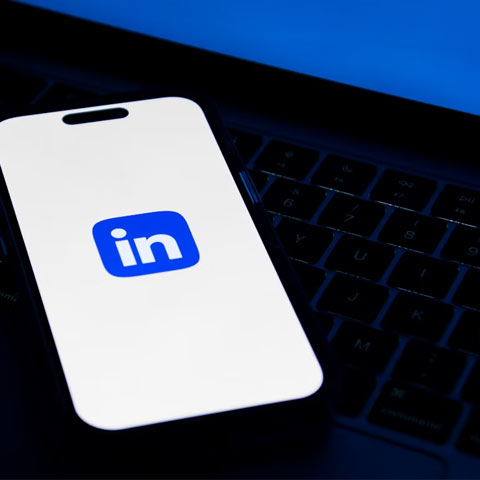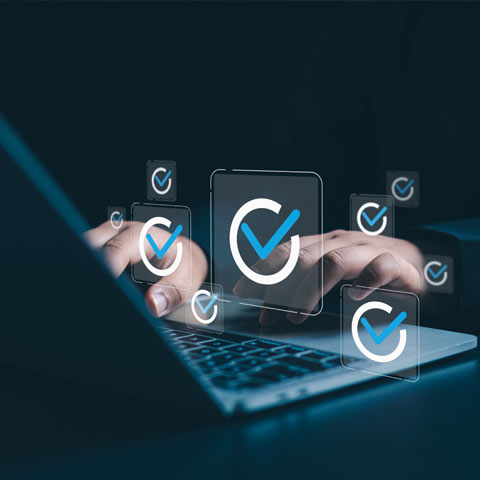5 Ways to Improve your Campaign Management


The best marketing campaigns are those which direct appropriate content, whether adverts, mobile push notifications, emails or direct mail, at customers and prospects who will find that content relevant and persuasive. Getting this targeting right demands a combination of sound intelligence, excellent audience insights, and tactical delivery, to ensure the right content will reach the right person at the right time. With effective campaign management, marketers can draw together the 5 elements required to drive compelling and highly engaging campaigns: quality data, audience segmentation, thoughtful scheduling, testing, and continual improve of a campaign over time through insights, attribution and measurement.
Here, in more detail, are the 5 ways to improve your campaign management, in order to deliver more targeted and revenue-generating campaigns.
1. Improve data quality
In most companies, data is held in a number of disconnected systems, for example it may be collected and held in a CMS, an eCommerce platform, an app or the website. When data from all of these siloed systems is collected together for processing, it’s inevitable that mistakes will creep in. Possibly a customer will be registered on three different platforms, or they will be recorded as ‘Jane Simpson’ on one system and ‘J A Simpson’ on another, or even erroneously on one platform as ‘Jane Simpton’.
Customers move and change their email addresses, so it may be that you’ll have three different emails and two postal addresses for the same customer across those systems. All of this can lead to wasted marketing budget, when an offer is emailed to the same person four times or a catalog goes to the wrong address, or failure to target a potential customer at all when it is assumed that two different Jane Simpsons are the same person.
As well, data from different systems may be recorded in different formats. For example, a POS system might record a pair of brown shoes as ‘brown shoes’, while the eCommerce store classes the same product as ‘MX5792’ and a call center as ‘SBS20’. Unless all of these classifications are standardized into one meaningful and consistent product name, it will be difficult to analyze disparate data and determine what sort of customer is most likely to buy those brown shoes, making it harder to target them with suitable future offers.
Cleansing, de-duplicating, unifying and standardizing all that data from every company platform is the best way to ensure resources aren’t wasted, messages will reach their intended recipient, and a clear understanding of each customer’s interactions with your brand is built. A data preparation tool, such as a Customer Data Platform, can help you to do this by extracting customer data from all source systems, standardizing it, cleansing and transforming it to remove errors, then joining up the accurate, usable data into a Single Customer View with the help of identity resolution and complex data processing algorithms. All of this can be done as a one-off process with a data bureau, but ideally, you’ll invest in technology to keep records up-to-date as net new customers and prospects come to you after the one-time process.
2. Segmentation
Once you have fully unified customer profiles and a Single Customer View, you’ll have all demographic characteristics, location, online behaviors, favorite products and brand interactions attached to an individual, and you’ll then find it much easier to target them appropriately. The aim will be to create groups of customers who all share similarities, with a particular focus on desirable qualities that buyers are likely to exhibit.
For example, a holiday company might create a segment of people to target with 18-30s holidays, including those who fall within this age group, are unmarried, have previously bought such a holiday, and have opened a newsletter or visited the website in the past two months. Once this segment is created, it will be possible for the holiday company to send the chosen few details of appropriate holidays or deals, as and when they become available.
The key to creating a suitable segment of customers is first to make sure you have a pool of trustworthy data to work from, including the necessary coverage of data points or attributes you’ll need to build those segments. You’ll need a strategy in place for the segmentation process, which can be simply entering all the data into a spreadsheet and manually categorizing it by certain columns, or involve using a marketing automation or campaign management technology solution to automatically create them. Some of the more sophisticated technologies are also capable of creating and launching a predictive algorithm to build customer segments using very large datasets.
Once segments have been created, you may wish to create further microsegments to better target these customers. For example, the 18-30 audience might be divided into those most likely to buy through a browser versus those likely to buy on their mobiles, or who tend to open emails versus those more likely to click on adverts. It is also possible to swell that audience by targeting lookalikes – for example, by determining precisely which audience members most likely to respond to your campaigns, then selecting an audience from within Facebook that shares similar characteristics or behaviors.
Once your microsegments are chosen, targeting people with the right message, on the right channels through campaign management becomes much easier. You will already know which subjects and products are likely to interest them, so you can craft appropriate content, and you can put that out on the channels they are most likely to convert from.
3. Throttling and scheduling
Another big factor in encouraging engagement is sending out communications at the right time, or potentially not at all when someone may have message fatigue. Equally, some always-on campaigns may need to be paused at particular times of the year. Part of that means getting the intervals for such communications right.
Imagine, for example, that a popular confectionery company wants to advertise 50% off a new type of chocolate, in order to create a customer base for that bar. If it displays an offer voucher to all 5 million of its social media followers at once, chaos will erupt. There could be product shortages in the warehouse and stores, the eCommerce platform might run the risk of crashing, and call centers could be overrun, leading to long wait times. It would therefore be better to send the offer in batches, to groups of maybe 250,000 at a time, to ensure demand doesn’t exceed supply. This can be arranged by throttling the ad release, i.e. creating a rule whereby, once the ad has been sent to the 250,000, the campaign is halted for 4 hours to allow those customers to be taken care of before the next batch goes out. As well, you probably don’t want to send that same offer out to individuals on more than one platform, again, to avoid message fatigue.
Time of day is also be important when it comes to communications. If a homeware ad is shown on Facebook at 9pm EST, that’s great for customers based in Massachusetts. They’ll be at leisure in their houses and likely browsing social media on their phone or laptop. But what if they’re in the UK? It’ll be 2am there, so the chances they’ll be up are very slim indeed. An ad sent to them at that hour might well fall on deaf ears. Equally, if you’re using SMS as part of your brand experience, no-one will appreciate your marketing if you send them an automatically triggered SMS order confirmation at 3am after their cousin has placed an order to be sent to their house.
It’s vital, therefore, to time campaigns and triggered messages with all possible markets in mind, either by segmenting customers from different countries for separate targeting or picking a campaign run time when all concerned time zones might see the ad, for example 12.30 EST (lunchtime in Massachusetts, commute time for those in the UK). Appropriate campaign management software – such as an Omnichannel Marketing Hub – can help with this, by providing automated send time optimization tools, campaign blackout times and campaign throttling, all powered by a Single Customer View.
4. Use control groups and do lots of testing
Let’s face it, running full-blown marketing campaigns isn’t cheap, so it’s worth road-testing the campaign steps that are expected to cost most and/or generate the greatest return before you commit to funding them, to make sure your marketing budget isn’t going to be flushed down the drain due to a fixable glitch. After all, little niggles and problems can creep up in all sorts of unexpected areas. It is too easy to switch a campaign on and start spending potentially huge sums of money, only to realize further down the line that you’ve placed a social ad to a highly untargeted audience, or at the wrong time.
For example, you might send out a mass email broadcast to your database of 2 million customers, which mistakenly includes large images or a spam trigger word (for example, “order today”), then find a large portion of your send ends up in a spam folder. If you’ve sent out 100,000 test emails and find that 35,000 of those never reach the target customer, that’s not so bad, and you can make some changes and try again in a more optimized way. That’s a much less costly mistake to make.
Similarly, road-testing your customer journey can help you to spot problems before they start to lose you customers. Is an important link leading to an error page, rather than your eCommerce store? Is the ‘buy now’ button on your social media page not working? Is your checkout process too laborious, asking for too much detail and taking the customer longer than three minutes to complete? When a customer uses your hotline and they press 3, does the line cut out, rather than connecting them to customer services?
All of these are problems that can be spotted and fixed by adding control groups at various stages of a journey, which enable you to evaluate if changes you are making are altering customer behaviors or not, before they cost you a hefty chunk of your budget or lose you too much revenue. Advanced analytics related to predictive modelling and Next Best Action can help you to automate and refine those customer journey steps at scale too, and then retrain themselves to eliminate those pain points before your customers experience them. More on that next…
5. Predictive modelling/machine learning/Next Best Action
These days, customers expect you to understand them and know who they are when you send marketing communications. Companies work hard to try and bring their data together to understand the customer journey and keep up with the interactions the customer has had with them, but it’s much more difficult to actually get ahead of the journey, to anticipate and meet a customers’ needs before they arise.
Prediction is a lofty goal, and one that it takes a lot of groundwork (and high quality data) to achieve, but thanks to machine learning, improvements in customer data analysis techniques, not to mention the fact that we now have huge backlogs of behavioral data to power the machine, it is now possible. First, marketers need access to all the data and be sure that it is reliable, clean and unified. This enables them to identify their ideal buyer personas, as mentioned earlier. A journey can be mapped for each persona, with the help of customer data analytics, and can be optimized to ensure offers, messages and processes are highly tailored.
Predictive modelling can be introduced to trace the journey of previous customers and then determine, in real-time, which channels certain personas should be presented with during their live digital experience, based on what others like them have done before. These models and machine learning algorithms can run through the customer journey time and time again, absorbing data coming in as campaigns are run and responses are collected. Their job is to get to know the expected journey inside out, fine-tune its course, and then provide options to customers in an attempt to elicit the best possible reaction. This is known as ‘Next Best Action’.
The algorithms can become self-learning, as they test, re-test and become experts on the various options for Next Best Actions, to the point where they can determine which is likely to be best received by the different personas. As they become smarter, they can determine how best to market to individuals at scale, by presenting them with tempting, relevant and engaging offers that they can’t pass up, facilitating an improved level of acquisition and retention, and thus increased return on investment. This cannot be achieved overnight, in fact it’s the very highest level of marketing maturity that demands many other aspects of campaign management are fully optimized first, but once self-learning is reached, the journey will get better and better, with progressively less manual intervention.
The marketing technology needed for the job
The intelligence, insights and tactical delivery needed for effective campaign management -especially for self-optimizing that management, will include; data management tools, campaign management software, customer data analytics and machine learning capabilities. Find out more about BlueVenn's Customer Data Platform. Register to see a live demonstration now, or get in touch with BlueVenn to find out more.
Want more like this?
Want more like this?
Insight delivered to your inbox
Keep up to date with our free email. Hand picked whitepapers and posts from our blog, as well as exclusive videos and webinar invitations keep our Users one step ahead.
By clicking 'SIGN UP', you agree to our Terms of Use and Privacy Policy


By clicking 'SIGN UP', you agree to our Terms of Use and Privacy Policy
Other content you may be interested in
Categories

Want more like this?


Want more like this?
Insight delivered to your inbox
Keep up to date with our free email. Hand picked whitepapers and posts from our blog, as well as exclusive videos and webinar invitations keep our Users one step ahead.
By clicking 'SIGN UP', you agree to our Terms of Use and Privacy Policy









